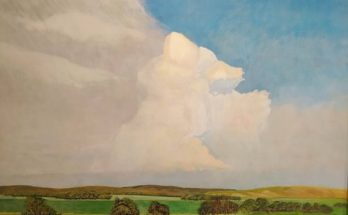By Leonardo Díaz
One of my favorite works of fiction is A Confederacy of Dunces by John Kennedy Toole. This work, published in 1980, has brought a bit of fame to present-day New Orleans, where a statue was erected in honor of protagonist, Ignatius J. Reilly.
What caught my attention about the novel is the story behind its publication. Toole died in 1969, and his mother tried by very inexpert but determined means to make her son’s posthumous manuscripts have some editorial significance. Her ingenuity persuaded author Walker Percy to read the work.
Percy recounts in the foreword to A Confederacy of Dunces that he received a barely legible carbon copy of the text, the opposite of normal protocol. Even so, he read it, and as a result, more than 40 years after its publication, we can still enjoy this book.
This anecdote makes me reflect on the number of works that have not found a stage or an audience, only because their authors did not use the right approach to get them published. Alain Deneault writes in his book Mediocracy, «Research centers tend to confine themselves to a very closed tone and world. In this environment of superficiality, there are a thousand and one details that determine whether a proposal will be accepted or rejected, including clothing, posture, gaze, tone of voice, how fast you speak, how you regulate your intensity, the way ideas are developed, the references chosen to be quoted, and perhaps also the person’s accent, background, gender, and age. This is especially true in the case of the granting of aid (…). A series of narrow formal boundaries limit the proposal to the point of being neurotic, and guarantee that some ideas are never even considered.”
Regarding painting, Art Brut (a concept conceived by the painter-sculptor Jean Dubuffet in 1945) was applied to proposals from the periphery, those produced by individuals who had no academic training or schooling, self-taught artists whose work had no approval from an academy or «experts in the field.» Theirs was free and pure painting.
Nowadays, almost anyone who has the capital and/or charismatic skills—and creates what in the popular imagination is considered «art»— can appear before an uncritical audience, impress with sophisticated clothes and verbiage, and be proclaimed a «revelatory artist.” These people generate Brut art—boring paintings without technique or intellectual impact, predictable, shockingly pornographic, or confused between morbidity, bad taste, and childish denunciation.
These artists come and go: hundreds of thousands of Basquiat’s illegitimate children, post Duchamps and post-post Duchamps works abound. Another example is the popular “anti-hero” Banksy, who usurps the transgressive illegality of graffiti—which is semantically peripheral—to gentrify neighborhoods.
The official academic, institutional, and private spaces where such creations are shown respond to a market logic of elite consumption that follows trends and does not analyze the aesthetic value of the objects it acquires. The lobbyists are the galleries and museums that legitimize these works and their artists.
However, if you are socially awkward, shy, introverted, unshowy, etc., tell me if it has been easy for you to deal with a world that loves noise so much, approves of stridency, compliments the histrionics, and admires the popinjay. Hopefully you are one of those few who has managed quietly and intelligently to overcome the raging seas of the shrill news and have raised the quality of your work through individualism.
In the music industry, Bad Bunny has been given an undeserved place over thousands of other invisible, unknown musicians who surely surpass this reggaeton player in talent (yes, yes, to each his own taste…). Still, it is an industry that responds to money, as in all the arts.
Whether due to class privilege, opportunism, charisma, or other external attributes, those who have achieved relevance, attention, and publicity have almost always been non-peripheral characters, not “outsiders.» If Toole’s work had not been given a chance, we would never have known that there was someone who imagined a character as extraordinary as Ignatius.
Shall we talk about outsider singer and artist Daniel Johnston?




